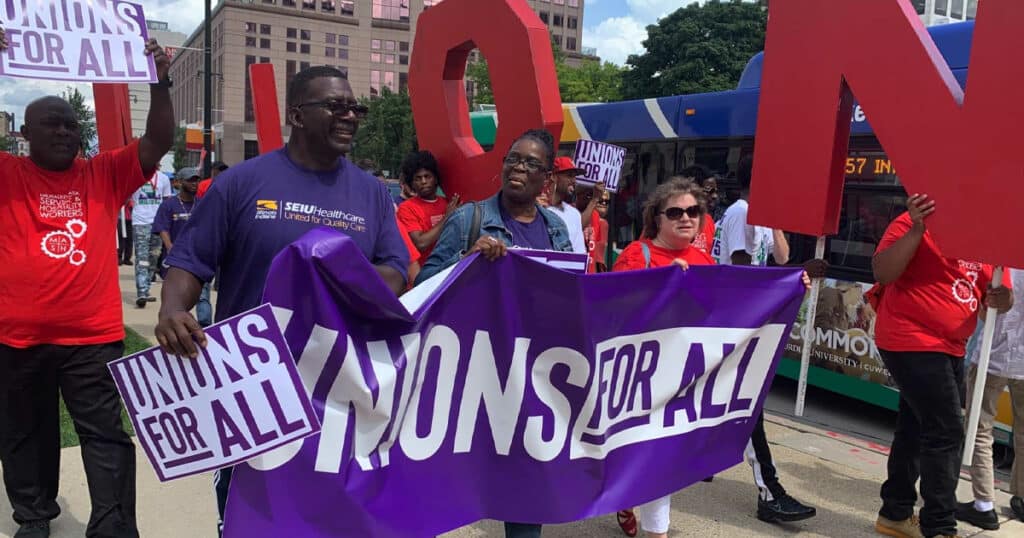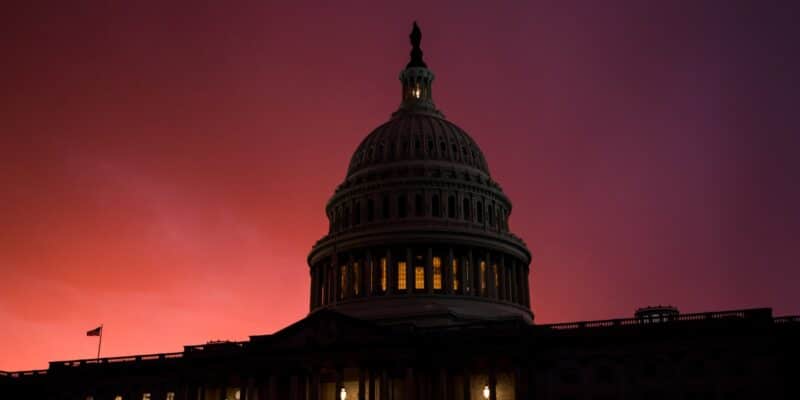
Union Membership Reaches New Low, Big Labor To Blame
During last year’s rail industry fiasco, liberal reporters’ jaws dropped when I sided with workers and “Scranton Joe” sided with Wall Street. “I definitely didn’t have Marco Rubio being more pro-worker than Joe Biden on my 2022 bingo card,” tweeted one account. While Democrats becoming the party of the rich and powerful is certainly news, so too is the fact that railway union bosses sold out their members. As I said at the time: “It reveals the out-of-date and out-of-touch nature of our current collective bargaining system.”
New Bureau of Labor statistics make that clear. In 2022 the share of U.S. union membership reached a record low. That happened despite the idea of organized labor being more popular than it has ever been since the 1960s, according to Gallup. No doubt this mismatch is partially the result of anti-union action by Amazon and other companies that have no respect for their workers’ dignity. But a trend that’s continued largely unbroken for seven decades can’t be chalked up to current economic conditions. Rather, it reflects the failures of union leadership and the brokenness of a system that hasn’t been revised since the Great Depression.
Don’t take my word for it – take the word of Jon Hiatt, the former general counsel at the American Federation of Labor & Congress of Industrial Organizations (AFL-CIO), who says that union organizers are “blowing [their] opportunity” to capitalize on the growing needs and wants of workers. Or take the word of Director Kate Bronfenbrenner of Cornell University’s School of Industrial and Labor Relations, who readily states that “the labor movement [is] organizing the same way they always have” in an economy desperate for change.
Most telling of all, however, is what workers say themselves. Though they are hungry for greater representation, only 35% of potential union members would vote yes to organizing, while a roughly equal 32% would confidently vote no. When pollsters asked those opposed to union formation the reason for their preference, very few respondents cited retaliation by management. Instead, they cited issues like union corruption, member dues, and – above all – politics. That shouldn’t come as a surprise when not a single political issue that the AFL-CIO is involved in receives a majority of workers’ interest.
To me as a policymaker, the conclusion is obvious. We need to break the stagnant monopoly of Big Labor and create new mechanisms for workers to negotiate with management in the workplace. That’s why U.S. Representative Jim Banks and I introduced the “Teamwork for Employees and Managers (TEAM) Act,” a bill that would update the 1935 National Labor Relations Act and grant American workers the right to organize outside of the official union framework. It would also guarantee a legally protected representative on large corporate boards. This proposal could inject new life into an economy long stifled by the dead hand of the past.
Left-wing pundits, of course, have come out swinging against the bill, rehashing Big Labor’s argument that permitting non-union organizing would mean the death of workers’ rights. Their false assumption is that Big Labor protects workers’ rights in the first place. If that were true, why has Big Labor endorsed mass amnesty for illegal workers? Why did union bosses coordinate with the rail industry to have Congress deny paid sick days to its members? And why has union membership declined steadily since the 1950s, despite the fact that the popularity of organized labor is at a 57-year high?
The answer is something I’ve been saying for the past few years. The Ivy League consultants, white-collar professionals, and increasingly woke activists running America’s major unions have become little more than extensions of the Democratic Party – and the Democratic Party, which in Joe Biden’s Senate days cast itself as the “people’s party,” has become the mouthpiece of white, college-educated elites. Workers deserve better, and the TEAM Act would give it to them.
Republicans are already building a multi-racial, multi-ethnic coalition to represent America’s working class. Now it is time to deliver for working families by putting them above the special interests that dominate today’s Democratic Party.
This article was originally published by RealClearPolitics and made available via RealClearWire.



